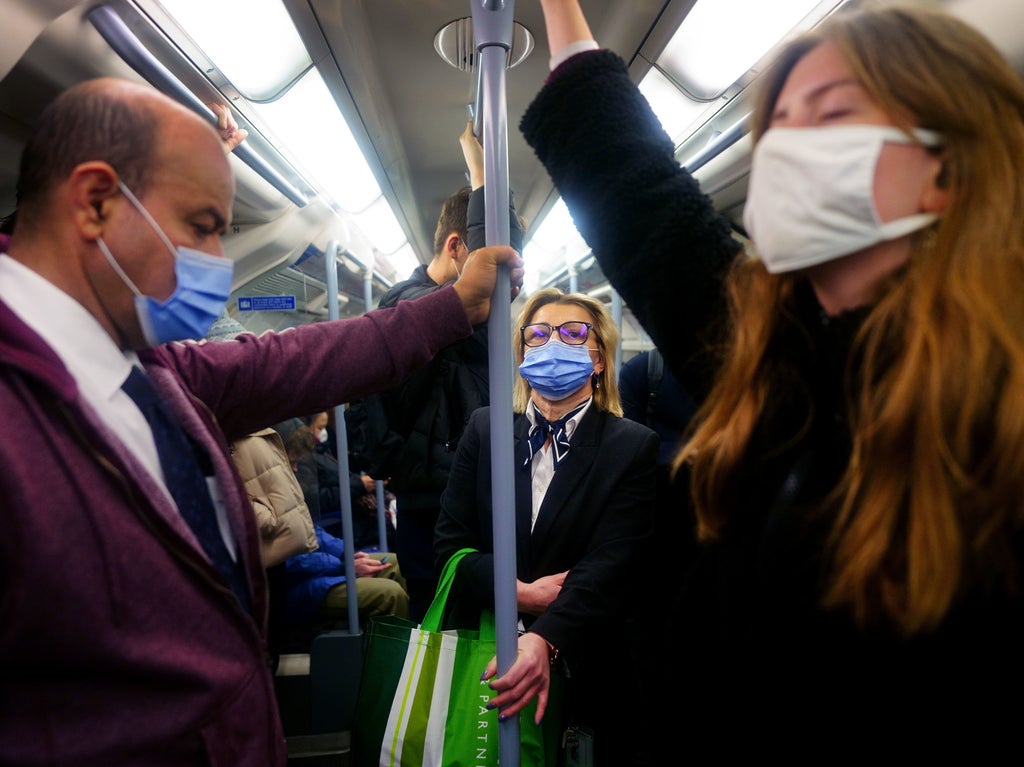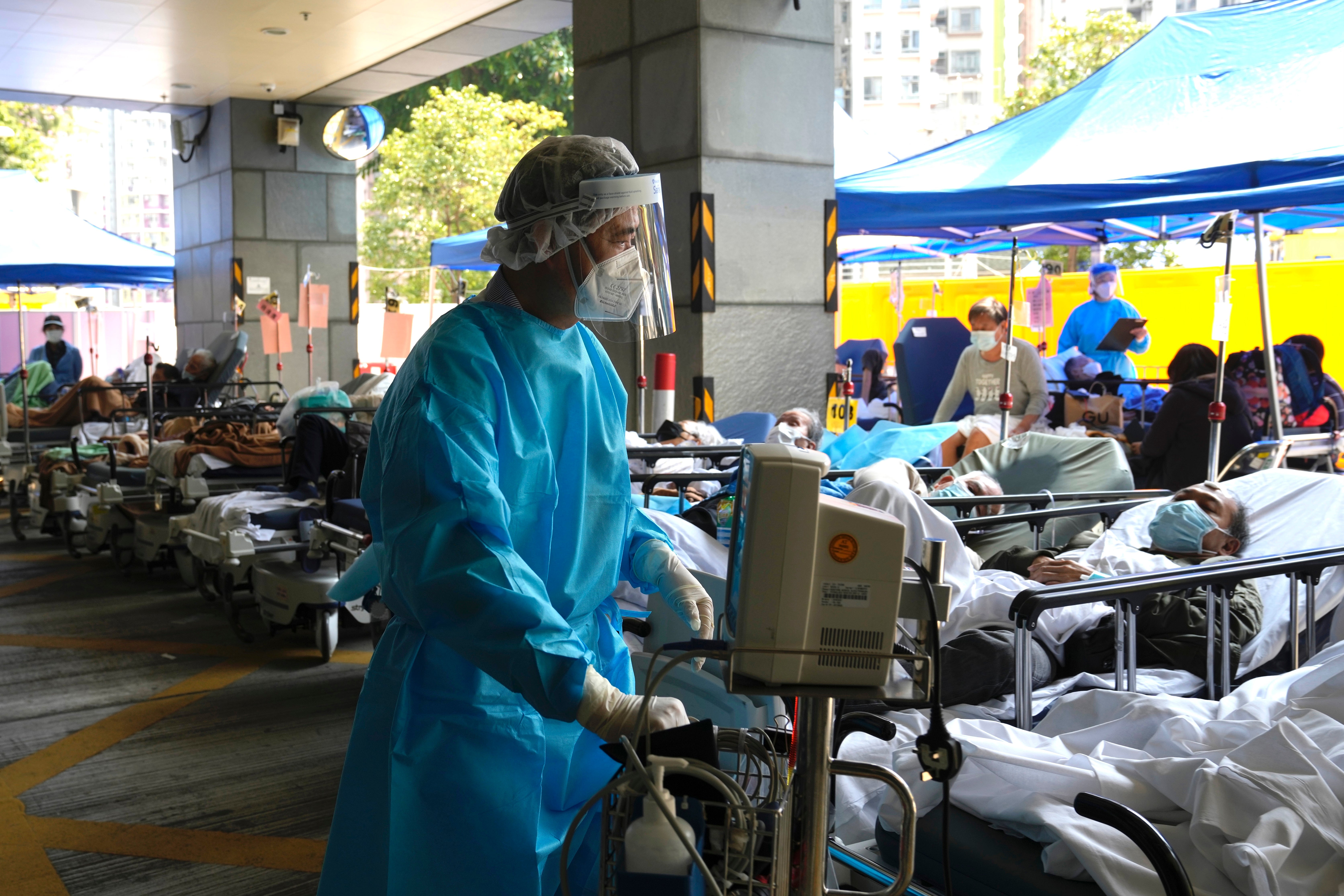
Concerns have been raised about a more infectious sub-strain of the Omicron Covid variant, as cases across the UK rise again.
The UK was hit by a wave of infections caused by Omicron (also known as BA.1) in December and over the New Year after it spread from southern Africa.
Despite infections subsequently falling, prompting Boris Johnson’s government to drop all social restrictions in England by late February, Omicron remains the dominant strain of the virus globally.
It accounts for 98.8 per cent of all Covid cases submitted to the GISAID global database for tracking the virus since 25 January.
However, the UK Health Security Agency (UKHSA) has said that a sub-lineage of Omicron, also known as BA.2 or “Stealth Omicron”, first discovered in December, is being treated as a “variant under investigation”.
Its chief executive, Dr Jenny Harries, warned last week: “The increasing presence of the BA.2 sub-lineage of Omicron and the recent slight increase in infections in those over 55 show that the pandemic is not over and that we can expect to see Covid circulating at high levels.”
The Wellcome Sanger Institute has meanwhile calculated that the strain accounted for 57 per cent of the 27,000 new cases recorded in England in the final week of February and is therefore already the dominant version of the virus being transmitted.
Eastbourne, Brighton and Hove, Windsor and Maidenhead and Reading are currently the worst-hit areas of the country.
The virus has also been detected in multiple countries across the globe over the last three months, including the US, China, India, Denmark, Germany and Australia, according to the World Health Organisation (WHO).
It is feared BA.2 could be more transmissible than its predecessor.
Professor Adrian Esterman, a former WHO epidemiologist, warned on Twitter that: “Omicron BA.2 is about 1.4 times more infectious than BA.1. The basic reproduction number (R0) for BA.1 is about 8.2, making R0 for BA.2 about 12. This makes it pretty close to measles, the most contagious disease we know about.”

Professor Paul Elliott of Imperial College London agreed, saying: “It is more transmissible. We are seeing an uptick in infections, particularly in the older group, and we are seeing an uptick in hospitalisations.
“At the moment, we’re possibly seeing the beginning of an uptick, but we don’t know where it’s going to go.”
A preliminary analysis of contact tracing between 27 December and 11 January by the UKHSA found that household transmission was higher among contacts of people infected with BA.2 (13.4 per cent) than in other Omicron cases (10.3 per cent).
In better news, the agency found no evidence of any difference in vaccine effectiveness against Stealth Omicron.
Its nickname comes from the fact that it is more difficult to differentiate from the Delta variant than its parent, which was readily identifiable in PCR tests because of the deletion of a specific spike gene, without which the new strain is more difficult to monitor, other than by undertaking additional genome sequencing tests in laboratories.
Dr Susan Hopkins, chief medical officer to the UKHSA, has said: “We now know that BA.2 has an increased growth rate, which can be seen in all regions in England. We have also learnt that BA.2 has a slightly higher secondary attack rate than BA.1 in households.
“Although hospitalisations and deaths remain low, cases are still high in some areas and some age groups so it’s important that we continue to act cautiously as restrictions are lifted. Consider wearing a face covering when in crowded places. Take a vaccine to protect yourself against Covid-19. If you have any symptoms, take a test.”
It is not currently known whether Stealth Omicron produces different symptoms to the versions of the coronavirus we have seen so far but, according to the ZOE Covid app, the most common symptoms being reported by patients at present are: runny noses, headache, sore throat and fatigue.
Other common Covid indicators include: sneezing, persistent cough, hoarseness, chills or shivers, unusual joint pains, fever, dizziness, brain fog, sore eyes, altered sense of smell, muscle pains, swollen glands, loss of appetite and chest pains.
Dr Meera Chand, Covid-19 incident director at UKHSA, said of the new sub-lineage: “It is the nature of viruses to evolve and mutate, so it’s to be expected that we will continue to see new variants emerge as the pandemic goes on. Our continued genomic surveillance allows us to detect them and assess whether they are significant.
“So far, there is insufficient evidence to determine whether BA.2 causes more severe illness than Omicron BA.1, but data is limited and UKHSA continues to investigate.
“Case rates remain high throughout the UK and we must remain vigilant and take up vaccinations. We should all continue to test regularly with LFDs and take a PCR test if symptoms develop.”
In its most recent update on 11 March, the UK government reported that 399,820 people had tested positive for Covid within the last seven days, a rise of 56.3 per cent week-on-week, part of a steady increase since the start of March.
Although it is no longer legally required for members of the public to wear face masks and observe social distancing in most indoor spaces, it might be advisable to resume those habits in the interest of protecting others from infection.







